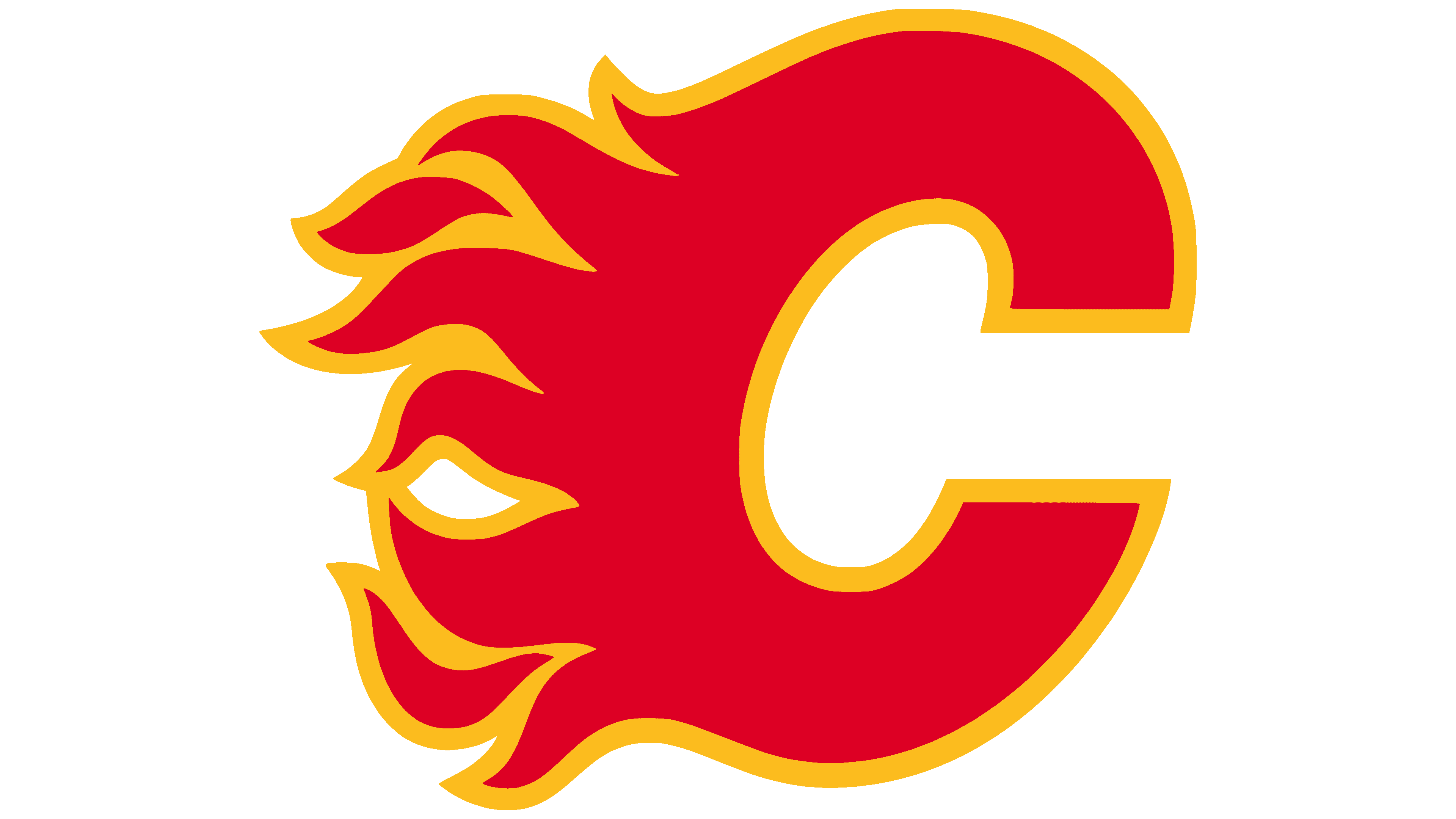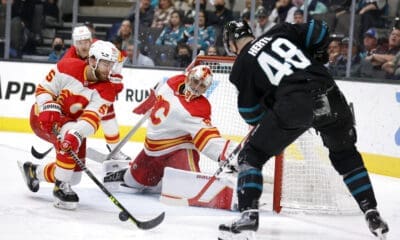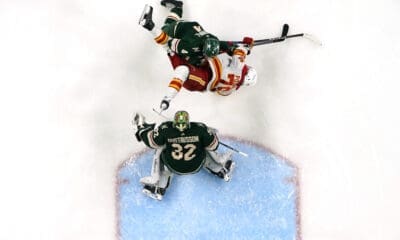Calgary Flames
Sclerosis

As I noted two nights ago, my expectations for positive activity at the trade deadline on the Flames‘ behalf were fairly low. With a day to reflect, I thought I’d try to make sense of the deals that Darryl Sutter made. As anyone who was reading my comments yesterday would know, I certainly wasn’t seeing any benefits as the deals were occurring, but it only seemed fair to let things cool off before reviewing matters a bit more thoroughly.
When I look at a deal, I'm mindful that a GM has three asset bases to operate from. First, of course, is a team's current reserve list. The second asset is whatever pool of draft picks a team has available at any given moment. Finally, every team has a budget limit, whether it's the cap in the case of a team like Calgary, or an internal budget number as a club like Nashville or Dallas would operate under. The usable asset for a GM, obviously, is the space between current and future obligations on the one hand, and that team's limit on the other.
With those factors in mind, let's review yesterday's activities:
Dustin Boyd to Nashville for a 4th round draft pick in 2010:
I use the phrase asset management a lot, and when situations like the Boyd deal arise, I begin to question whether Sutter, and other GMs of his ilk, actually understand how hard it is to acquire a NHL player from a middle round draft pick. For a player picked in the 4th round, the historical percentage of that pick turning into a big-leaguer is around 9%. Whatever people might think of Dustin Boyd, the Flames traded a player who had beaten the odds in his own way. Third rounders aren't much more likely to make the Show, and the fact that he had graduated, even as a 4th liner, meant the Flames had gained something tangible with his selection that was greater than what you could bank on from simple chance.
The other factor that makes me wonder about the team's judgement is the matter of his age and contract status. He'll turn 24 this year and was a RFA at season's end. The Flames had him in a spot where he wouldn't have garnered much more money via negotiations or offer sheet, and they could have retained a decent player at a bottom-of-the-roster price. I really couldn't care less if he'd plateaued as a guy who was going to be somewhere between 9th and 14th on the depth chart, because that's exactly what they were paying him. At the very least, his play and salary caused no harm, and he was young enough that he may well have improved to at least an acceptable third line option on a good team.
So, you have a salary-controlled player at the bottom of the roster who wasn't that bad at actually playing hockey. He was cheap, would likely continue to be so, and you would own his rights for the next several years. What do you do? I could think of many useful things, even if the team wanted to move him along, but selling him for a low-chance lottery ticket wouldn't be any of them. When the team begins the search for some useful cheap guys next season, they might realize that a player of his level would have been handy to have around. This isn't an epic disaster or anything, but it certainly is a matter of a GM not really attaching proper value to an actual, live, NHL player.
Curtis McElhinney to Anaheim for Vesa Toskala:
This is actually the trade I could defend with the least difficulty, and it's no hell. The Flames do need a decent back-up for a few more games this year, and as dreadful as Vesa Toskala has been the last several seasons, he still has more pedigree than McE. That doesn't mean that the trade was worthwhile, but unless there's actual evidence that the acquisition of his contract limited the Flames from taking on a better player, it's really just spending money against this season's cap, and I've seen no evidence that ownership is interested in restraining Sutter from making these sorts of moves. All this transaction does is signal that the Flames will have a new number two goalie next year, and not much beyond that. My only hope beyond whatever Toskala may add in the next few weeks is that Anaheim feels like they owe the Flames a favour for saving them 700k. I'm not counting on that, but stranger things have happened.
Aaron Johnson and a 3rd round pick in 2010 or 2011 to Edmonton for Steve Staios:
This deal, of course, can only be defended if you’re convinced that Darryl Sutter will be able to shed some piss-poor contracts this summer without giving up something tangible from the Flames’ asset base. If he can, as a hockey deal for the next 19 games, it can be defended in some manner as long as Staios plays better than Adam Pardy and the Flames play past April 10th. If he doesn’t play better than Pardy and the Flames finish 9th or worse, keeping Aaron Johnson and the pick would have be preferable.
It’s the implications for next season that make this deal seem like such a loser move. If the Flames wanted to simply add a veteran D man, they could have traded that 3rd rounder for a player with an expiring deal. As iffy a case of asset management as it would have been, they could have tried to use Boyd to leverage an UFA player like Joe Corvo. At least that guy can still play, and play big minutes at a proper level. Frankly, they likely could have had Aaron Ward or Andrew Alberts for peanuts, and again, those guys would both disappear from the payroll in the summer while offering analogous performance to the man they acquired.
In contrast, the Flames are stuck with a defenceman in his mid-thirties who’s level of play has dropped off since the Oilers made their cup run in ’06, and whose cap hit for next year is 2.7 million. On top of that, they gave Edmonton something extra to make the deal. Given the cap mess Steve Tambellini made for himself, I would have asked for a pick if I were demented enough to acquire Staios in the first place.
Again, if Staios' contract disappears this summer, then the price isn't an issue, but the fix the Flames are in for next year would have prevented me from ever pulling the trigger. I went through the Flames' cap situation for the next two years Monday, and needless to say, this doesn't aid matters. The Flames have less than 4 million dollars left for next year if the cap stays flat, and have Higgins and White to deal with, plus they'll need to fill out the bottom few guys on the roster. That seems like an awfully tight spot to put yourself just to acquire Steve Staios.
So, let's examine how Sutter did in managing his assets. First, the reserve list hasn't been affected that much for this year, and Staios may be a plus for the next 19 games. Next year, when the Flames are wishing for a cheap bottom-sixer, Boyd's absence may be fully felt, but that is next year's problem, and as I noted the other night, you can fill out the bottom of a roster later in the UFA period if you're a smart shopper.
Draft picks, as I mentioned yesterday, are the currency of player movement on deadline day, with 2nd rounders being the going rate for a useful UFA. In terms of acquisition, the 4th rounder for Boyd was a low-ball return for an actual body his age. Would a 2nd rounder been enough? For the criteria I have, not really, but 2nd round picks do seem to have tangible value around the league as bargaining chips. As I noted yesterday when the deal went down, the third rounder in the Staios deal was overkill, only in that Edmonton should have been giving up a tangible thing for Calgary's assistance in getting that contract off of their books.
Finally, cap space. For this year, unless the acquisition of Toskala clearly scuppered another deal, the cap issue isn't relevant. The Flames have plenty of room for injuries, and lots of bodies to go through before they'd have to call up another player.
It's next season where the Flames have begun to get clogged up. They have a pretty average roster that's almost completely in place, precious little wiggle room to address any potential needs, and that condition existed before they acquired Steve Staios. Yesterday's events left the team less flexible than they were before the trades.
It really is the cap space management aspect of the Staios move that gives me the most pause. I was hoping that last year's season-ending fiasco would serve as Darryl Sutter's "kid touching a hot stove" moment. He was openly contemptuous of people that questioned how he handled the team's roster last spring, and for anyone who would point to injuries or bad luck as an excuse, you'll notice he didn't leave the team in that spot this year. His cap management for this season was actually pretty reasonable for a team that had as many big tickets as this one did coming out of camp.
What he has done, of course, is ham-string himself for next year, and for a very shaky potential return in the short term. The only conclusion I can come to is he believes that every summer can be like last summer, where he managed to extract himself from a couple of self-dug holes, but that's questionable risk-management given the limited number of teams that can take on the contract of a player like Sarich, Staios or Kotalik. I can only hope that for the sake of those of us that cheer for the Flames, he actually can move the necessary pieces around this summer, because if Darryl Sutter has lost another gamble, next season will be another where the team remains mediocre at best.
by Robert Cleave









